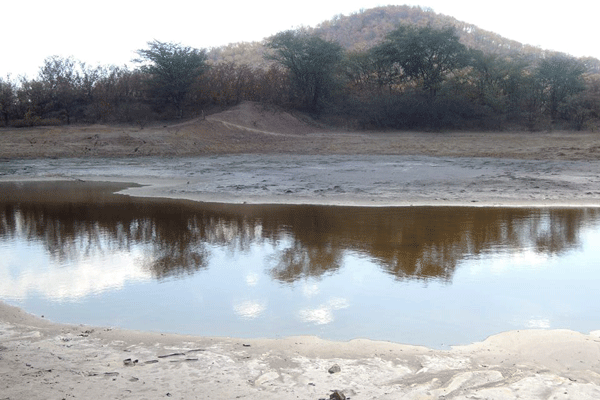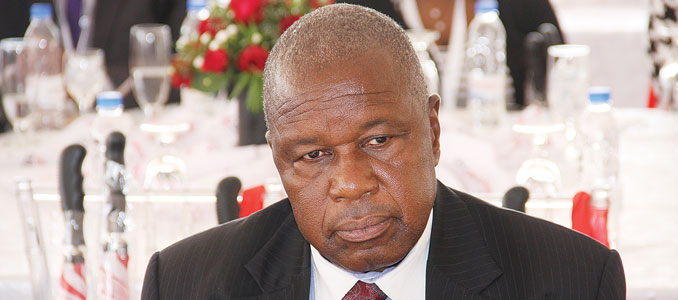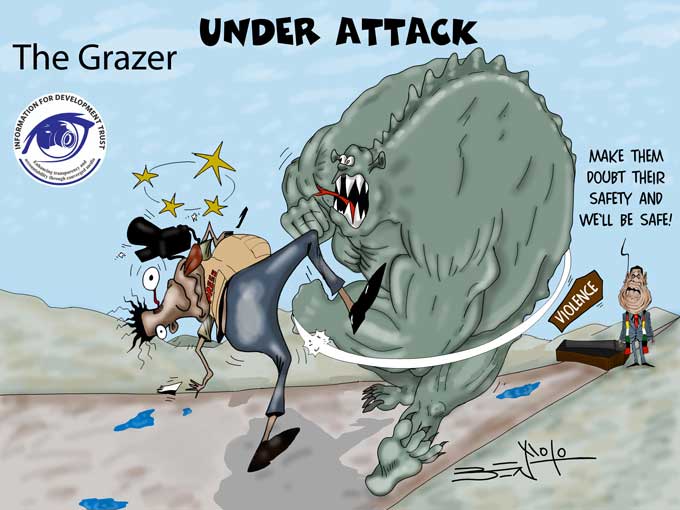
Zimbabwe’s biggest coal producer, Hwange Colliery Company, prides itself for being the engine that keeps Hwange running, having turned it into a “self-contained community” and providing basic services to the approximately 55 000 people that live there. Lowly-ranked miners and their families, however, are starting to see their circumstances with new enhanced lenses.
environment By Chipo Masara

A damning report produced by the Centre for Natural Resource Governance (CNRG) — an organisation whose primary focus is the adverse effects of extractive activities on poor communities — detailed how years of coal mining has left Hwange town engulfed in coal dust. An Environmental Impact Assessment (EIA) conducted in the area by Exclusive Environmental & Planning Services on behalf of CNRG only confirmed what many had always suspected — the atmospheric air in the area has greatly been affected by years of coal mining and emissions from the Zimbabwe Power Company’s furnaces, among other adverse effects of coal mining.
Coal dust, especially the fine coal dust that completely covers Hwange, has been observed by doctors worldwide to cause an increased incidence of heart and respiratory diseases like asthma and lung cancer. The health risks have been seen to increase with the level of frequency of exposure.
According to the World Health Organisation, “There may be no safe threshold for fine particulate matter and the effects are linearly related to concentration.” Of particular concern are coal dust particulates as they contain heavy metals that include cadmium, lead, mercury, nickel, tin, arsenic and antimony — which are toxic even at low concentrations.
In Hwange, breathing challenges have become so severe that many there have resorted to drinking cold milk every day to help ease the respiratory problems. Monetary constraints prevent many from consulting doctors to seek proper diagnoses and treatment.
One woman from Wankie 2 District who talked to CNRG alleged her husband, who had been working at the colliery for 35 years, died in January 2016 after developing pneumoconiosis as a result of years of inhaling the coal dust. The death of her husband left her with three children to fend for.
But having a community filled with people with respiratory diseases is not the only “legacy” associated with coal mining in the area. As a result of the mining activities, Hwange is an area with ruined vegetation, characterised by stunted sooty trees that show little hope of recovery. Underground smouldering of the coal deposits are producing fires that have proved to have detrimental social, economic and ecological impacts. The burning is said to continue proliferating the underground long after the surface fires have been put out, in the process burning all the forests and vegetation in the way and disrupting the soil and causing major cracks on the ground. Lately, the cracks have been exacerbating the abrupt sinking and collapsing of the ground, often with dire consequences. According to CNRG, one young boy in the area had his life changed for the worst when he fell into the underground burning coal when the ground caved in as he herded cattle.
- Chamisa under fire over US$120K donation
- Mavhunga puts DeMbare into Chibuku quarterfinals
- Pension funds bet on Cabora Bassa oilfields
- Councils defy govt fire tender directive
Keep Reading
Additionally, the EIA noted that the soils in the area “are heavily contaminated due to disposal of chemicals from the mining activities”, further affecting the growth of plants and trees. The PH of the soils in the area was reportedly very acidic, at about 76%. It is therefore suspected that the plants and trees in the area are, as a result, also heavily intoxicated with chemical substances, posing harmful consequences to the locals who grow and harvest vegetables and fruit for consumption and commercial purposes, as well as anyone else that may consume them.
According to the report, open cast mining by VMK — a coal mining company no longer operating in the area — affected groundwater reserves through underground contamination. The company reportedly left a trail of contaminated water sources that are currently posing a health hazard to people and animals in the area. The acid mine drainage produced by the leaching and toxic minerals present in coal has had an adverse effect on drinking water quality, making it too acidic and therefore unsafe for consumption or domestic use. Water contamination is also seen to be caused by the accumulation of coal dust on the water environment.
With Zimbabwe on the wrong side of history as the government is continually seeking more ways of expanding its indigenous energy resources — particularly coal — there appears little hope for the affected people of Hwange, a town cursed to be home to coal reserves estimated to last approximately 1 000 years at the current production levels.
Feedback: cmasara@standard.co.zw or acmasara@gmail.com










